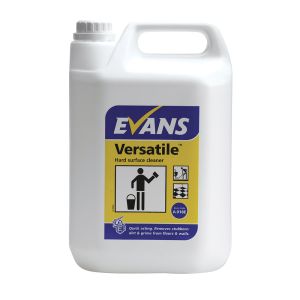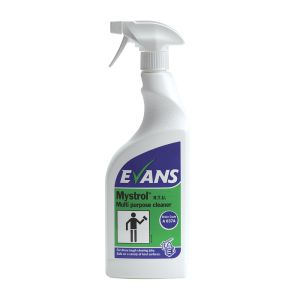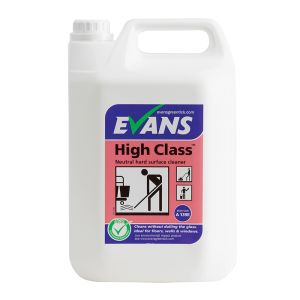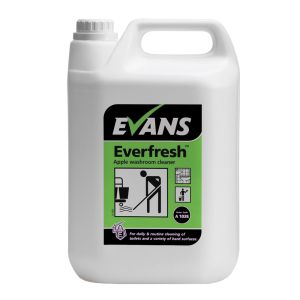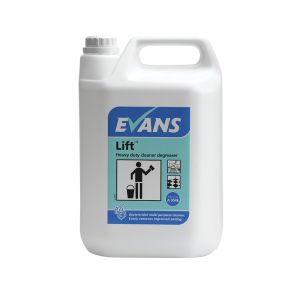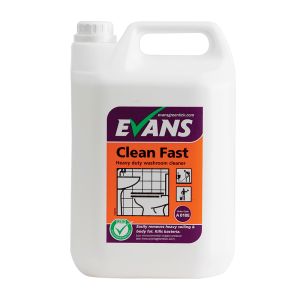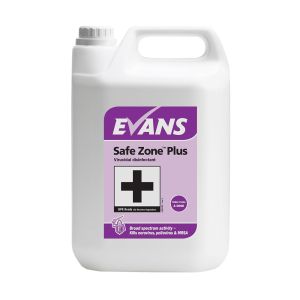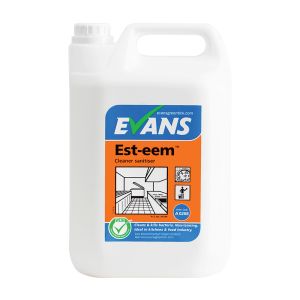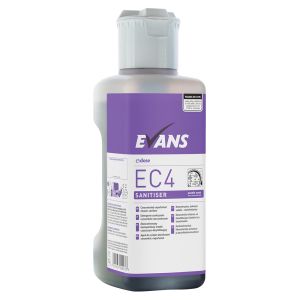Cleaning, Disinfecting, or Sanitising - What Are The Differences?
In the worldwide fight against Coronavirus, as well as practising good hand hygiene we must also practice good surface hygiene. Evans have put together this helpful guide to talk you through the differences between cleaning, disinfecting and sanitising products to ensure you are using the correct product for the job.
Cleaning
Cleaning is the removal of dirt grease and other matter from surfaces. To do it effectively you will need to use an appropriate chemical detergent or cleaner capable of dissolving and removing grease, dirt, and food debris.
Disinfecting
Disinfecting uses chemicals to kill microorganisms (bacteria, viruses, fungi etc, depending on the chemical formulation) on surfaces or objects. Disinfectants do not work as well under dirty conditions so pre-disinfection cleaning is always required to get the best results and further lower the risk of spreading infection. EN 1276 is the European test used to confirm bacterial activity and the specification states a 5-log reduction must be achieved, the equivalent of 99.999%. EN 16777 and EN 14476 are European tests used to confirm virucidal activity and the specification states a 4-log reduction must be achieved, the equivalent of 99.99%.
Virucidal products are recommended for high traffic areas, where a confirmed outbreak occurs, or if reported in the community. For low traffic areas, general cleaning and disinfecting procedures are sufficient.
Sanitising
Sanitising is a phrase used in the food and catering industry. There is always a compromise when formulating chemical products; either a product is formulated to be a good, efficient cleaner or a good, effective disinfectant. A sanitiser falls somewhere between the two and has properties to both clean and disinfect. A sanitiser can be used for both stages of the two-stage process, once to clean then again to disinfect.
Cleaners, Disinfectants and Sanitisers must be used as recommended by the manufacturer in order to be effective. Particular attention should be paid to dilution rate and contact time.
Do All Surfaces Require the Same Level of Cleaning and Disinfection?
Surface cleaning and disinfection is essential to prevent the spread of the virus. Governing bodies and guidelines state that surfaces should be cleaned and disinfected using a two-stage process, i.e clean surfaces first, then disinfect second. For more information on this process please read our ‘How to Disinfect Surfaces’ blog.
Common hand-contact surfaces, such as door handles, taps, work tops ad appliances, and any areas where there is a potential risk of spreading the virus, should be cleaned, and disinfected frequently, using the recommended two-stage process. Areas which have a low risk of transferring infection, such as floors, carpets, walls and windows, will not require disinfection but should be cleaned using a high-quality cleaner.
What to Consider when Choosing Your Product?
When choosing the fight product for the job at hand you should consider the following:
- Is this product effective against the microorganisms I am trying to kill?
- Is this product suitable for a specific application?
- How should this product be used?
- What dilution rate is needed?
- What contact time is required?
- What in-use precautions are required?
When using Evans products, be sure to follow these important points:
- Use correct dilution
- Use correct contact time
- Use responsibly and as intended
- Dispose of correctly
Depending on Where, What and Why you need to clean and disinfect, Evans has a selection of products for a variety of applications.
Cleaners
Sanitisers and Disinfectants
These products pass EN 16777 and/or EN 14476 and are affective against enveloped viruses, including Coronavirus.
We also have a range of super concentrate products which offer low cost-in-use and help reduce plastic consumption.



